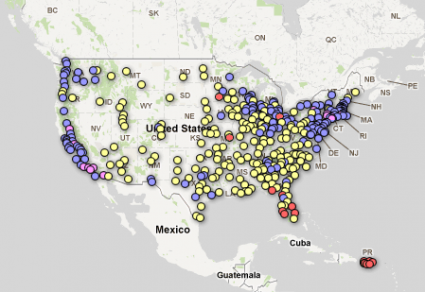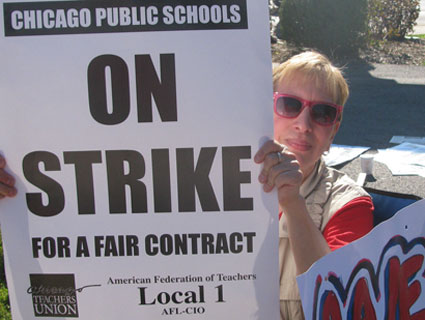Update Wednesday, November 14: Thought teacher strikes were yesterday’s news? Turns out that September’s walkout by Chicago teachers set off a rash of other strikes in Illinois. The Chicago Teachers Union ultimately ratified a 3-year contract, raising pay by about 18 percent on average. But Lake Forest teachers decided to strike the same week over similar issues: health care, benefits, and performance evaluations linked to standardized test scores, closely followed by three additional Chicagoland teacher strikes. We’ve also updated the map with submissions from reader comments, so keep them coming!
By our count, there have been 839 teacher strikes in the US in the last four decades, 740 in Pennsylvania alone. See our map below to find out where teachers have gone on strike the most, and which states prohibit teachers from hitting the picket line.
(See below the map for notes on the ins-and-outs of what constitutes a strike, strike legality, and more.)
Are we missing a strike? We are building this data set as we go, so if you know of a strike in your hometown in the last 40 years or so, please leave it in the comments below.
Note that in some states, for example Washington, teachers are not legally protected if they strike, but don’t face any legal penalties if they choose to do so. In these states, courts can still order teachers back into the classroom (Emanuel tried this tactic in Chicago.)
In Maryland, it is not illegal for teachers to strike, but it is illegal for unions to direct a strike, according to Susan Russel, head legal counsel at the Maryland State Education Association.
Some strikes in prohibitive states occurred before anti-strike laws were passed; but in other cases, teachers found ways to skirt the law (by calling in sick, en masse), or risked jail time.

















